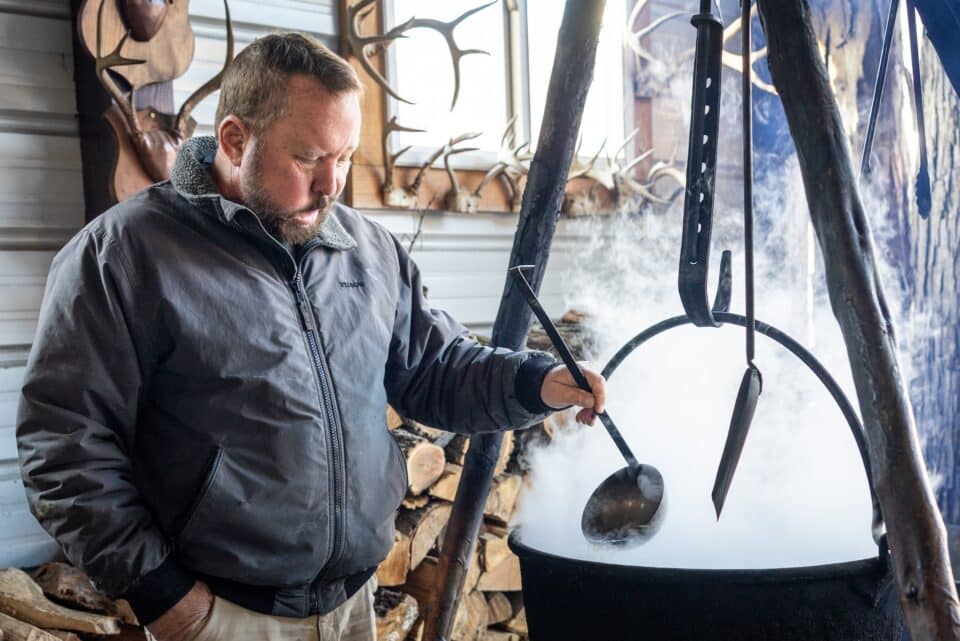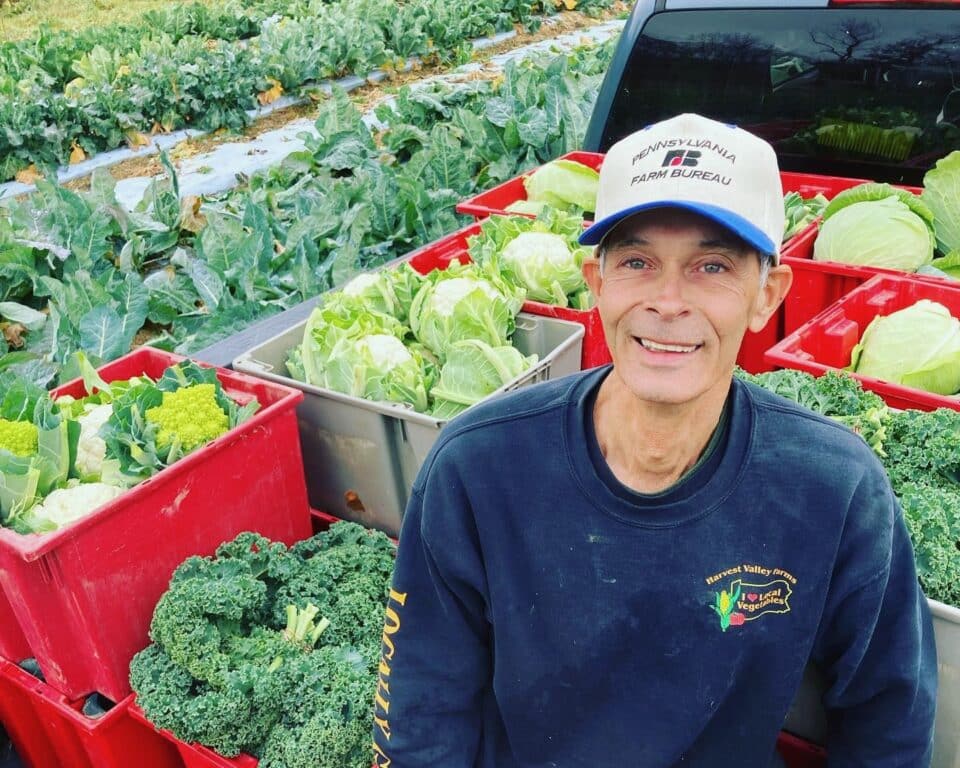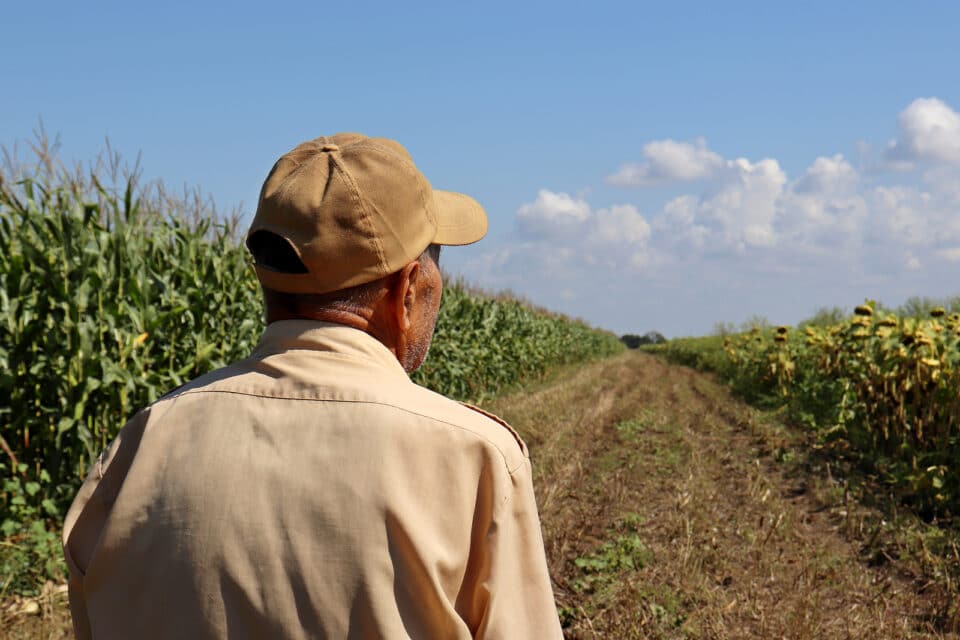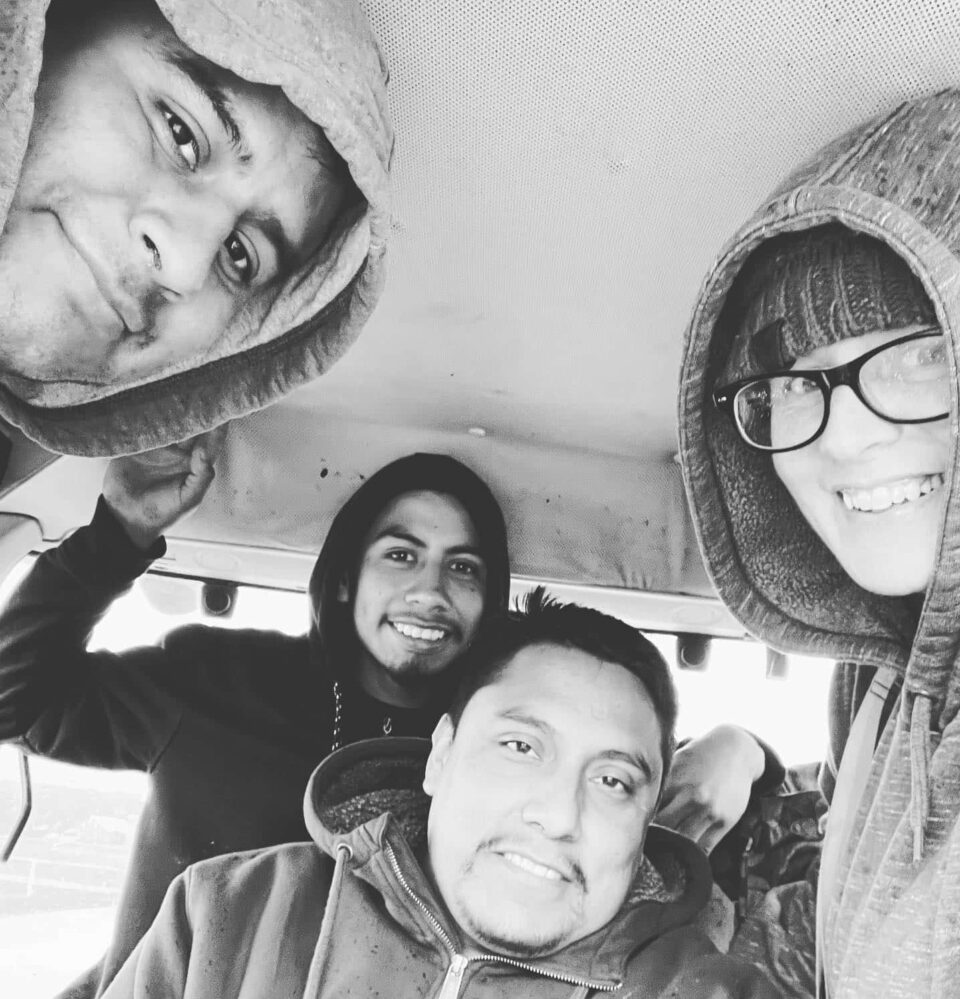Here in Pennsylvania, we are blessed with numerous family farms who have been working and thriving in the state, for generation upon generation. But we’re also home to a great many new farms: scrappy, ambitious start-ups that must navigate the ins and outs of the agricultural industry against the backdrop of a rapidly changing figurative and literal landscape.
What is it like to become a first-generation farmer in the 21st century? How does the process of starting a farm even work? These were just some of the questions on our mind when we spoke with Joel and Emily Kuhns, a couple who are in the very early stages of starting an orchard, Odyssey Orchard. We first learned about the Kuhns because they are recipients of AgChoice Farm Credit‘s 2021 Jumpstart Grants, $10,000 grants awarded to new farmers.
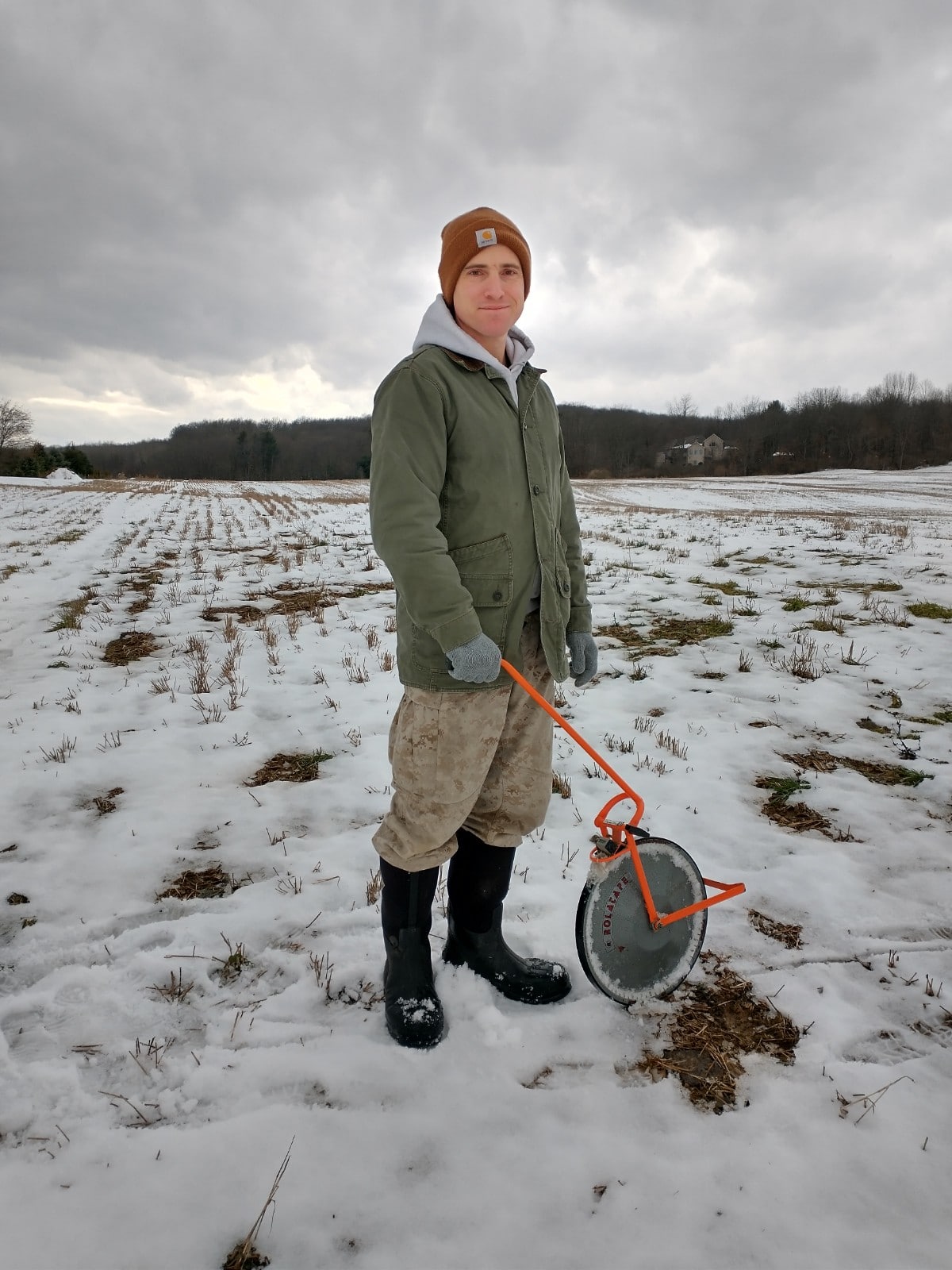
Joel Kuhns of Odyssey Orchard
This is the couple’s first foray into agriculture, and we were excited to learn more about their plans to grow sharp and bitter-sharp apples specifically for the craft cider market. Get to know all about Odyssey Orchard in our Meet the Farmer profile:
PA Eats: Where are you two from? Why did you choose Pennsylvania to establish your apple orchard?
Emily Kuhns: We’re both originally from Pennsylvania, but we’ve kind of been all over: North Carolina, Florida, Georgia, Ohio, Washington and Connecticut. Joel was in the military, and part of that was jumping around from station to station. But now we’re back in PA! We always wanted to come back to Central PA and always wanted to get into an agricultural venture.
Was farming part of your professional or personal backgrounds before this?
Joel Kuhns: My dad was a horticulture professor at Penn State, and he grew some Christmas trees on the side. I grew up working on the Christmas tree farm. I probably didn’t appreciate it the way my dad hoped I would have, but after heading out on my own and spending some time in the military, and working some 9-to-5 desk jobs, the idea of having your own business where you get to work outside had a massive appeal.
Emily: I grew up outside of Philly, and came to State College for the biology ecology bachelor and doctoral programs. I worked in the industry as a scientist and head of R&D and director of new technology before coming back to Penn State for corporate engagement here. In the meantime, I developed hobbies around fermenting. Cheesemaking is one of them, as well as making cider and perry. In general, I’m interested in biotechnology and the agricultural sector. It all comes back to a fascination with the living world and wanting a connection with the land.
We’re self-taught, we’ve been utilizing a lot of the Penn State Extension services. Washington State is also a big apple producer and people there have been a big help, too.
So, why an apple orchard?
Emily: In 2018, we were living in Connecticut, both working corporate jobs. We were not very happy with where we were. We wanted to come back to State College, and we kept thinking that one way to do it would be to start an agricultural venture that would be the catalyst for coming back. Literally and figuratively we wanted to put down roots.
Joel: As for what to grow, we had to think about what we like and what lines up with the place we want to be. Through her home brewing and fermentation, Emily found this notion of hard cider, and we had that “aha” moment that apples grow really well here. There’s a good base for apple-growing in Pennsylvania. The more we read about the industry, the more it seemed like the apples that make dynamic cider are a missing part of the supply chain. When we were first trying to decide if this was the right idea, some of the people at Penn State Extension we’d talked to said they’ve done market surveys and there’s a huge interest in cider apples. But there’s a barrier to entry because it is a niche crop, as the acids and tannins in the apples are too high to sell them for eating. Cidermakers want them, but many growers don’t want to take the risk.
What’s the first step to starting an orchard? How did you set out on this venture?
Joel: We started shopping for land in 2018, and actually bought a farm in 2019. It’s in Warriors Mark, PA, just over the county line in Huntingdon County, about 20 miles west of State College. It was just a large crop field, not an orchard.

A panoramic view of the future site of Odyssey Orchard
When we were shopping, we knew we wanted to grow apples, so what we were looking for was something that could support the business we wanted. It had to be relatively close to State College, within 10-20 miles of town, and it had to be affordable. It doesn’t matter how good the land is, we need to be able to pay it off in a reasonable amount of time. Then we had to break out the state soils map from the USDA, and ask, Will this land grow apples? We also had to go out to visit the place and see the terrain to see if it would work with driving a tractor. Everything looks flat on Google Earth, but when you get there, you might find, for instance, that the land slopes in a way that’s more exaggerated than it appears on a map.
Emily: We looked around a good bit. One of the disappointing things is that when we finally settled on a piece of land, we found out there was an easement on it that we weren’t aware of. On another place, people who own the mineral rights which meant they would be allowed to mine underneath and pump water onto the land. These are old contracts, and while these fine details might not affect annual crops, an orchard is a 20-year cycle. It’s very challenging to go into that knowing there’s a possibility that someone could come in and do something detrimental.
Once you found the right property, what happened next?
Joel: We ordered our trees in 2019. There is a three-year lead time for these special varieties, so you’ve got this tricky financing aspect, trying to line up all the things you need, land, equipment, infrastructure, irrigation and so on. Lenders ask about planting and harvesting and you say you won’t harvest ’til 2025!
Right now, we’re in the process of getting the basic infrastructure laid in. This fall through winter, we’ll put the driveway in, get the barn set up and dig a well. Then come spring, we’ll get into the planting. Once that’s done, we’ll finish up with the final infrastructure, like trellising and laying out the irrigation lines. All this work has to go in fits and starts.
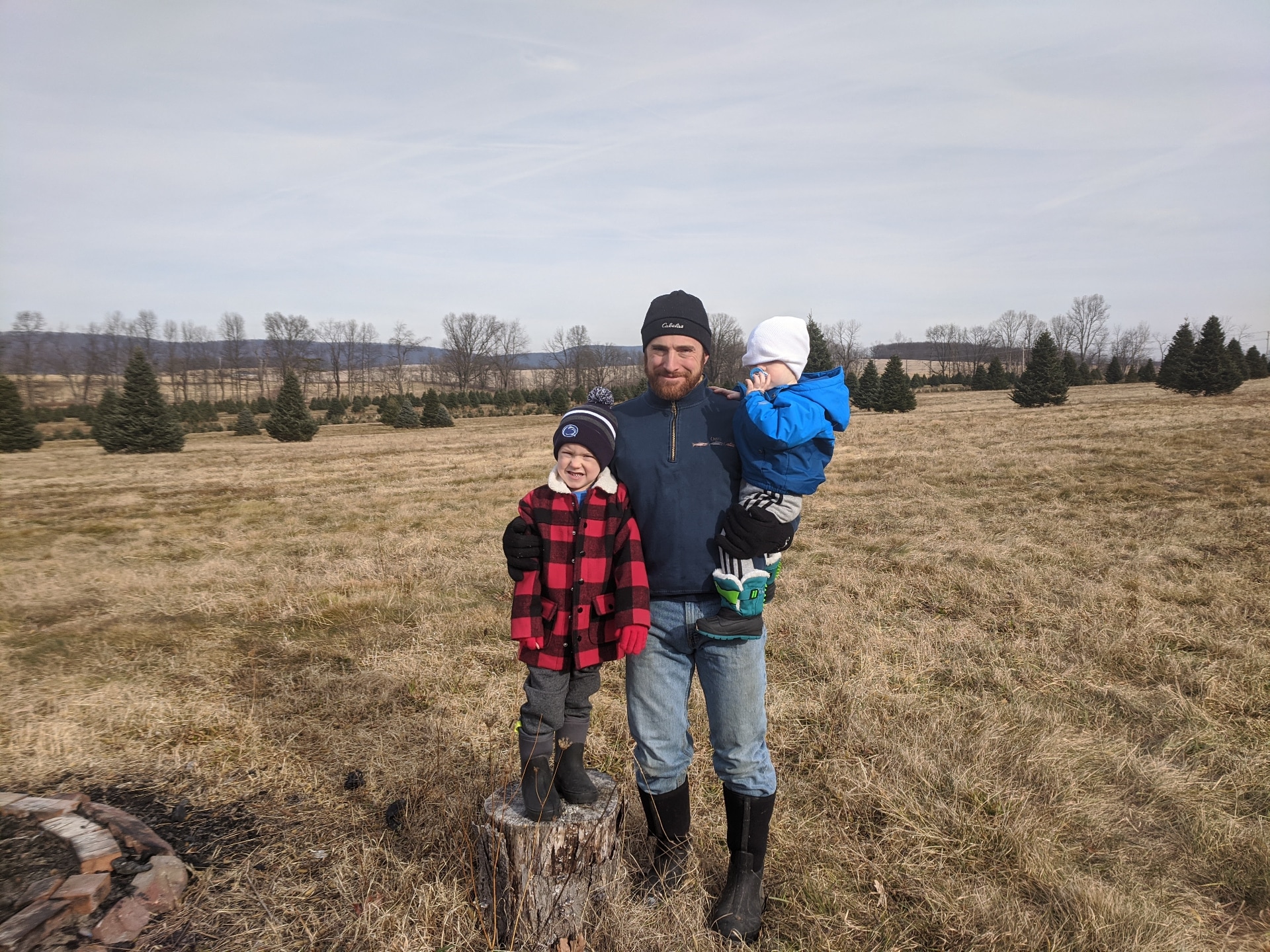
Joel with his children at Odyssey Orchard
How many, and what kinds, of apples are you planting?
Joel: We’re planting roughly 3,000 trees across 6 acres this year, and we’ll plant another 3,000 next year, working our way up to 10 acres. We did research on all of the planting styles that you can use for apples, and we settled on a tall spindle set up. This creates a higher density orchard, and the trees grow a bit taller and invest more of their energy in fruit. They’ll be about 10 feet tall, and the orchard will look like walls of trees in rows. In a lot of older orchards, the trees are pruned to be smaller and are spaced out more. There’s been a good bit of research by Cornell on the economics of planting and they really recommend the tall spindle system to increase apples grown per acre.
Emily: The apple industry has plenty of sweet apples, so we avoided those because we assume cidermakers today are missing the bitter and bittersharp apples. We spent time reading about how well some of these apples seem to be growing in our region, mostly in New York, and I tried to pick ones that weren’t terribly susceptible to pests and diseases, and ones that had more predictability year on year. We are planting Dabinnet and Porter’s Perfection, as well as Harrison, Ellis Bitter, Tremlett’s Bitter, Somerset, Dolgo Crab and Hewes Crab. There are a variety of nurseries throughout the Northeast, we’ve ordered a little bit from each based on what they were able to acquire. We used Adams County Nursery, Cummin’s Nursery in Ithaca, NY and Wafler Nursery in Wolcott, NY.
You said it will take a few years for the trees to bear fruit, right?
Joel: Most trees produce some fruit in the first year, but we want the trees’ energy put into establishing themselves. In 2023, we hopefully will have some samples for customers. But part of the appeal for the tall spindle is that they do grow faster. The orchard life is reduced but you get up and running a lot faster. When we wrote our business plan, we have our 5, 10 and 15-year objectives, and our objective in the first 5 years are to get up and running and profitable. Then we will have the space to do some other things, like experiment with some other planting styles that will give us more longevity. To keep the orchard going beyond 20 years, every 5 years we may plant a new plot of trees and that way, down the road, once that first set hits 20 years and stops producing so well, it will be time to cycle them out and replace with new ones.
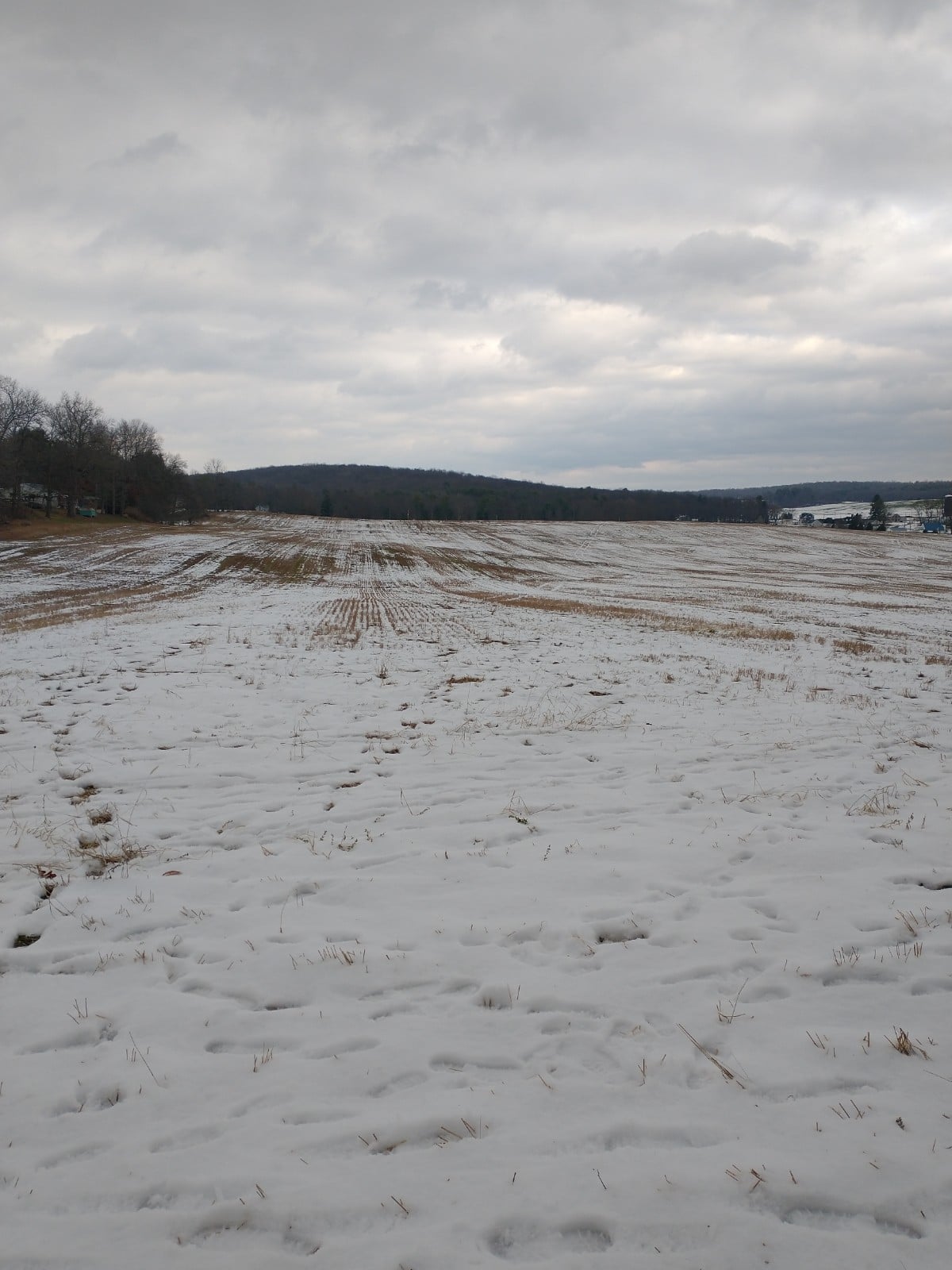
We are so excited that new cider apples will be hitting the market in the next few years, which will hopefully be great news for the rapidly growing craft cider community in Pennsylvania and beyond! To learn more about Odyssey Orchards and keep track of their progress, head to their website
- Photos: Courtesy of Odyssey Orchard
